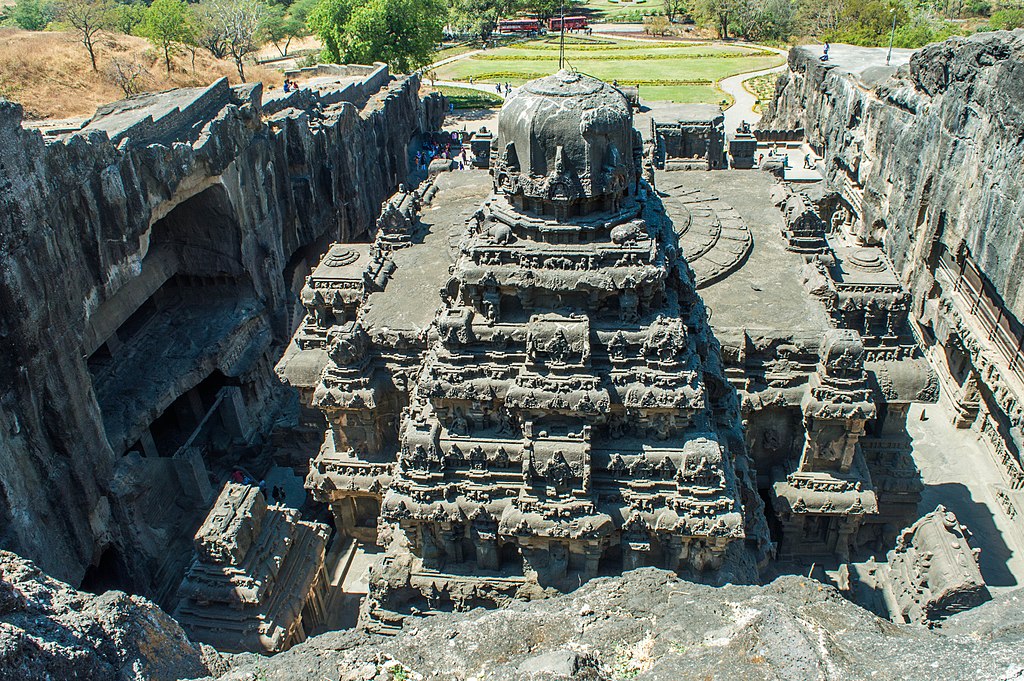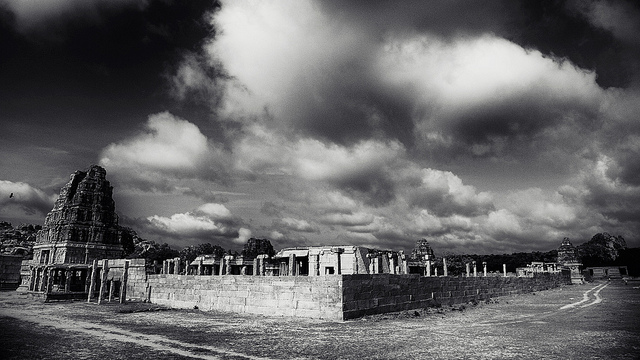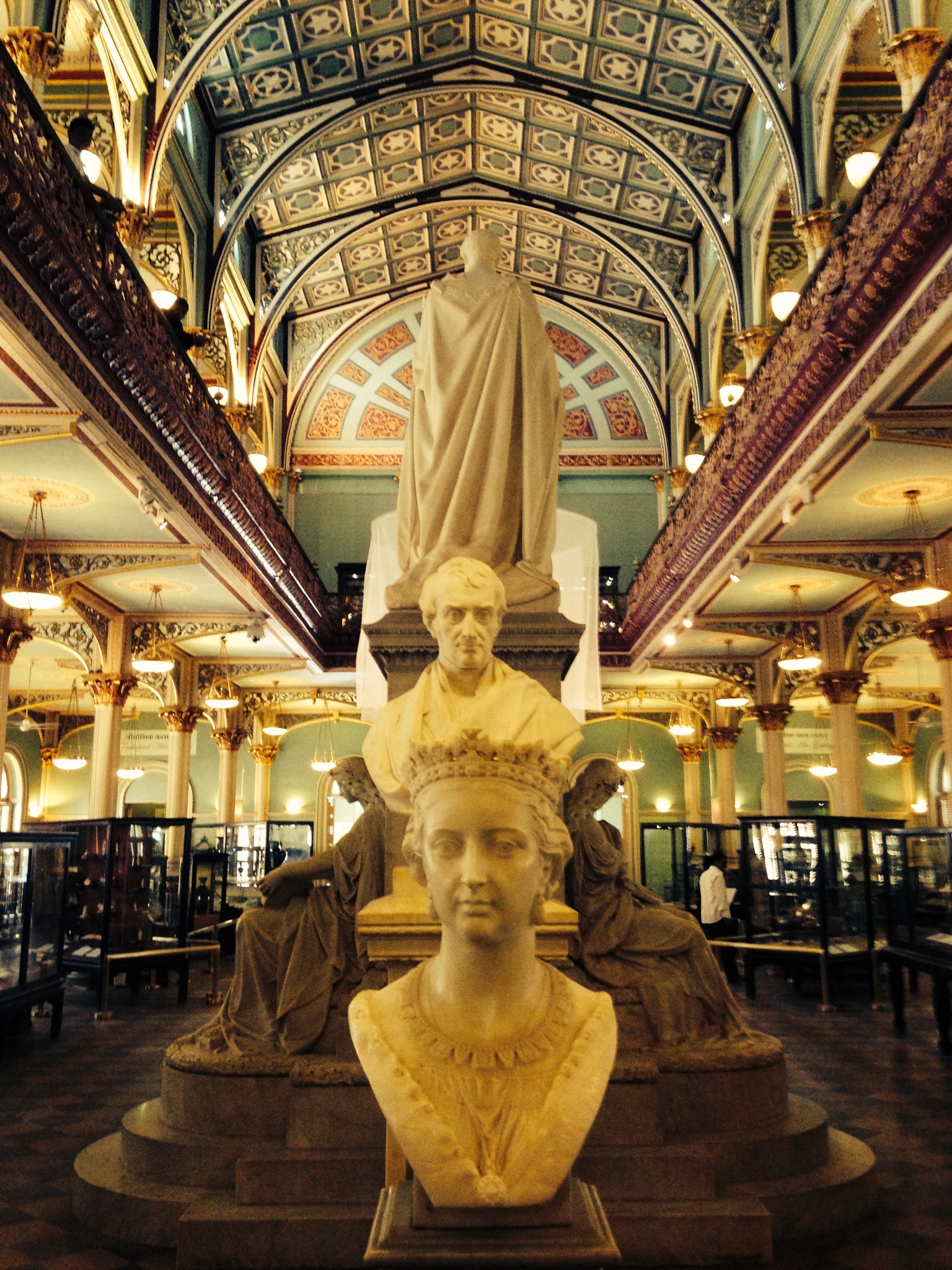Heritage: The Foundation of the Future: Architect Parul Zaveri’s Journey (Event Synopsis)
Article By The Acropolitan Editorial Team
 Architect Parul Zaveri established Abhikram (Sanskrit: initiation) to explore design directions and processes that make built environments functionally, psychologically, environmentally and spiritually more contextual, more comfortable and more healthfully livable for all.
Architect Parul Zaveri established Abhikram (Sanskrit: initiation) to explore design directions and processes that make built environments functionally, psychologically, environmentally and spiritually more contextual, more comfortable and more healthfully livable for all.
At a time when energy guzzling steel, cement and glass towers are making towering bar-graphs of our city skylines, Parul and her late partner Nimish Patel have been successfully re-establishing the use of traditional material, technologies and craftsmen, adapted to a contemporary context. The path has not been easy, but armed with a clear intention and an unwavering conviction that has seen them refuse projects when clients’ belief systems are not in consonance with their own, and courageously stipulating environmentally friendly materials and processes as a precondition, they have embarked on building a better world.
This belief in sustainable architecture and interiors has led them to diverse projects, from rural schools to the multi- award winning luxury hotel Oberoi Udaivilas (Udaipur), which in employing 300 local craft persons over 3 years, magnificently showcases the timeless richness of local aesthetics and artistic traditions.
The prestigious awards they have garnered over the years, for excellence in Public Architecture, Social Responsibility and Heritage Conservation, including from UNESCO, are a tribute to both the quality of their work and the strength of their conviction.
In July 2019, Parul flew down from Ahmedabad to address The Culture Circle, presented by New Acropolis (Mumbai) and left us all with much to ponder.
The concept of Sustainable Living seems to have gained traction recently, in an approach that seeks to increase efficient utilization of energy, water and all our natural resources, to boost community wellness. Sustainable architecture comprises the design and construction of spaces to minimize their negative environmental effect and maximize their socio-cultural impact. Says Parul, “The construction industry alone is responsible for 50% of the global water usage, and 65% of the global energy usage, and contributes to 50% of landfills. Materials and processes used in building and interiors are causing rising rates of allergies, cancers and other life-threatening diseases.”
It is clear that sustainability is no longer a luxury, but a necessity. And the rampant disastrous practice of fulfilling present needs at the expense of future generations must be halted.
How has this happened?
“Colonization and Industrialization brought into being a linear economy instead of the circular economy that traditional societies followed. This narrow funnel vision skewed all productivity towards its own needs, at the cost of the destruction of local resources and economy. A tree must grow from its own healthy roots,” says Parul, referring to the need to extract the value of local age-old materials and practices.
She elucidated by saying that incongruent modernization and the global standardization of lifestyles ignores tradition, resulting in a wealth of traditional knowledge dying out, as our mindsets have been colonized into believing that new, modern, and ‘scientific’ technology is superior, sophisticated and preferable. Instead she insists that ancient knowledge has sharpened over centuries of experience and experimentation with local materials across diverse trades. “Is that not a science?” she asks.
Her question immediately brought to my mind the monumental, mystical pyramids of Giza, the magnificent Roman Colosseum, the enigmatic ruins of Machu Pichu! What skillful technology and artistry might have been employed to build them? Knowledge that still eludes us today! These supreme examples of sustainable architecture, that have withstood the test of time, contrast sharply with our modern construction practices that are evident all over Mumbai in decaying and decrepit urban sprawls.
More examples of sustainable living leapt to my mind. Palaces in the desert climate of Rajasthan were cooled by step-well systems and intricately carved jali panel walls that diffused the sun’s heat while enhancing light and ventilation. Sustainable architecture is not a modern buzzword, but had been around from time immemorial. The wisdom of ancient traditions in far flung continents, isolated from each other by time and distance, lived by the simple principle that the balance and harmony between Man and the Earth he called his home, must be respected.
I was brought back to the present as Parul continued: “The conservation of our natural heritage is vitally important since our manmade heritage stems from there.” Sustainability then is an attitude, a process of responsible consumption. We need to make the transition from degrading the environment, to protecting it. But to have the desired impact Parul clarified, “No individual, NGO or government has the wealth and ability to conserve all that we have. It needs to be both a grassroots, as well as a top-down movement, both wholistic and universal, that involves all people, each and every one of us.” This does not necessarily mean a reduction of material comfort; just more humane and less wasteful processes to achieve human comfort and health.
What is the path forward to attain this goal?
“A major shift in outlook is imperative. We have to re-center our focus on locally-based knowledge, technology and skills which are environmentally friendly, have longer lifespans and are less embodied energy. We must have a cross sectored approach towards decolonization and de-standardization, which includes culturally relevant education, teaching methods and textbooks. Solutions to our problems must be found from our own resources, and by developing stronger partnerships with the scientific community, to validate traditional knowledge and cultural heritage.” She concluded with a practical message: “And finally, take responsibility. Design responsibly. Make responsibly. Sell responsibly. Use responsibly. Re-use, re-cycle, and replenish the Earth.”
From a philosophical perspective, to me, sustainable living is an attitude that recognizes that our living spaces are a vital and integral part of the larger environment, which is the living biosphere we call Earth. It is to accept stewardship of our planet, and to acknowledge and commit to humanity’s role as temporary trustees of the Earth. To regard our natural resources as sacred, might inspire us to respect, and cherish them as precious gifts, to be treasured as a blessing – not just for our own, but for countless generations to follow.
Image Credits: By Parul Zaveri
The entity posting this article assumes the responsibility that images used in this article have the requisite permissionsImage References
Image courtesy Parul Zaveri
Permissions required for the publishing of this article have been obtained




What do you think?